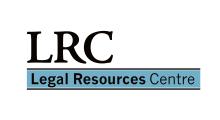Resource information
“The Langebaan lagoon is the only non-estuarine tidal lagoon in South Africa. It is situated on the West Coast, approximately 100 kilometres north of Cape Town. The mouth of the lagoon, on its northern side, is entered via Saldanha Bay1. The lagoon is a highly legislated area. It was proclaimed a marine reserve in 1973 in terms of the Sea Fisheries Act2 and in 1985 it was proclaimed part of the Langebaan National Park, whose name was later changed to the West Coast National Park. The Park covers approximately 40 000 hectares, and includes not only the lagoon (which extends over some 6 000 hectares), but also the Malgas, Jutten, Marcus and Schaapen islands. These islands are home to almost a quarter of a million sea birds including gannets, cormorants and gulls. In 1998 the lagoon was listed on the Ramsar List of Wetlands of International Importance3 and in 2000 it was proclaimed a “marine protected area” (“MPA”) in terms of the Marine Living Resources Act4 (“MLRA”). It is thus an area of immense ecological significance. It is home to some 282 bird species, 23 of which are so-called “waders” which include 15 species of Palearctic migrant birds who travel each year to the wetlands surrounding the lagoon from regions as far afield as Greenland, and Siberia. Up to 55 000 water birds have been recorded at the lagoon during the summer season.
2. Because it is entirely marine and has a relatively stable salinity level it supports dense populations of molluscs and crustaceans, as well as some 71 species of marine algae which serve as a food source for birds and fish. Dr Sue Jackson, a zoologist employed by the Department of Botany and Zoology at the University of Stellenbosch who prepared a report in this matter at the instance of the Legal Resources Centre, explains that most warm marine environments are in the tropics and are thus relatively unproductive whereas the Langebaan lagoon “is an island of warmth within the highly productive cold upwelled waters of the Benguela Large Marine Ecosystem”, and as a result it is an important breeding site and refuge for more than 30 species of bony fish and sharks. Amongst the fish which spawn in the lagoon is the southern mullet or “harder” as it is more commonly known. The high productivity of the lagoon has important implications for the harder fishery. Harders which breed within the lagoon are on average approximately 3 cm longer than the next largest harders on the South African coast and their fecundity results in their stocks being more resilient to exploitation than slower growing populations elsewhere.” The applicants ( all either small scale fishers or associated with small scale fishers) content that they should be permitted to fish in zone B of the lagoon which is currently restricted.
The court order was as follows “ The restrictive conditions which were imposed in the permits and interim relief exemptions which were granted to the applicants for 2016, restricting them from fishing in Zone B of the Langebaan lagoon and the decisions in terms of which such conditions were imposed, are declared to be arbitrary and irrational and to constitute unfair discrimination against the applicants on the grounds of race, and thus unconstitutional, and are reviewed and set aside;
(ii) First, second, third and fourth respondents shall be liable jointly and severally (the one paying the other to be absolved) for the applicants’ costs of suit, which costs shall include the costs of two counsel.


